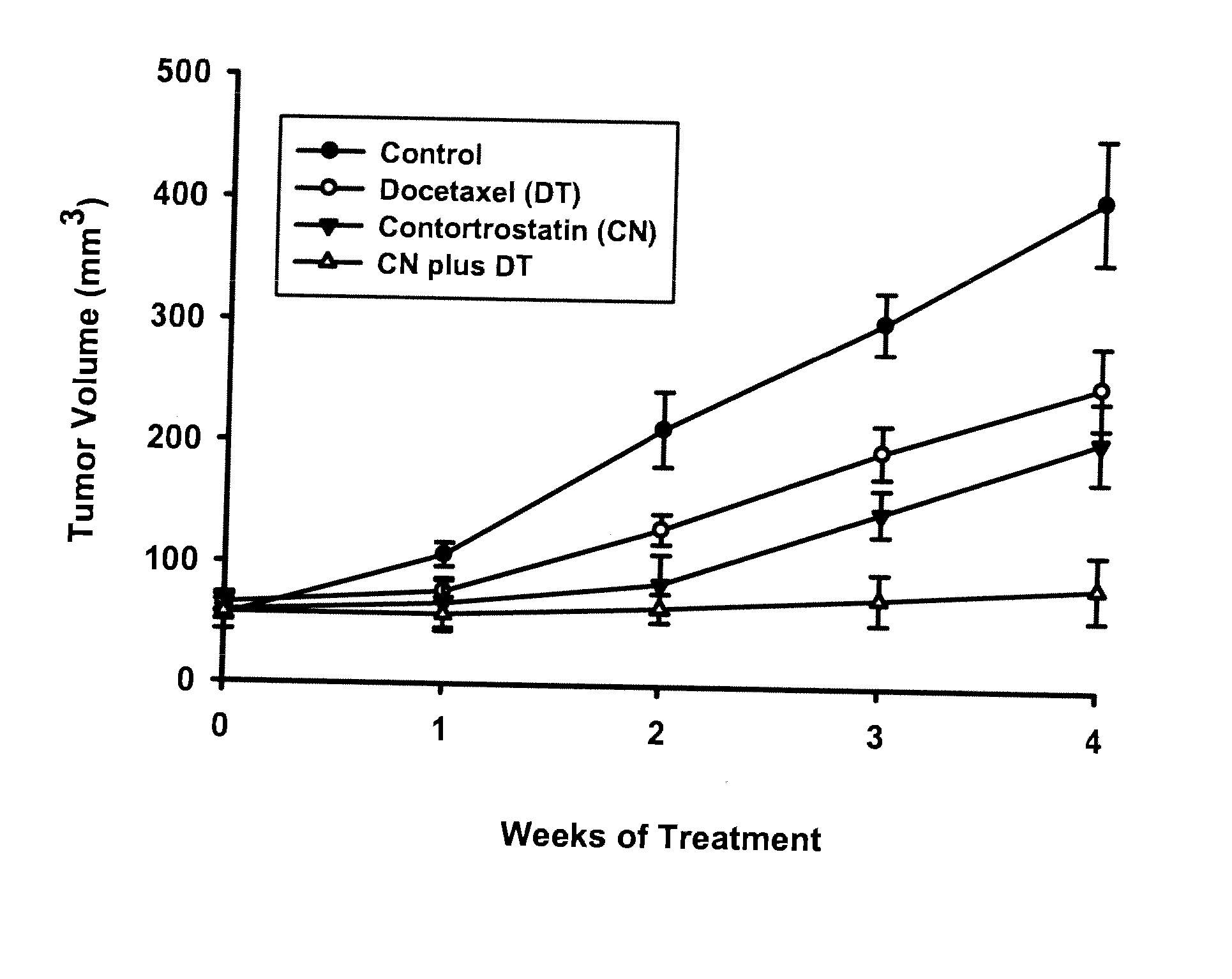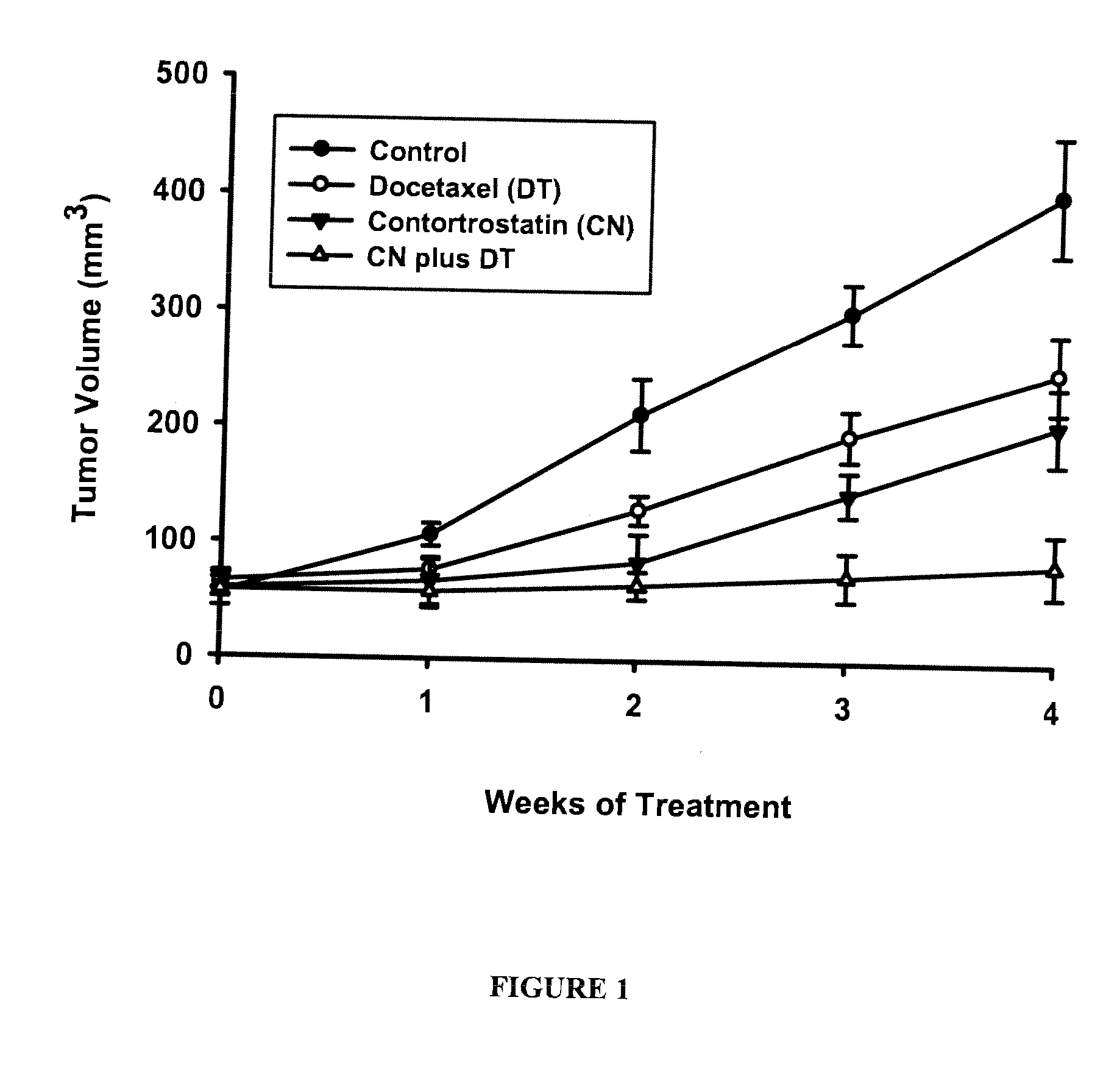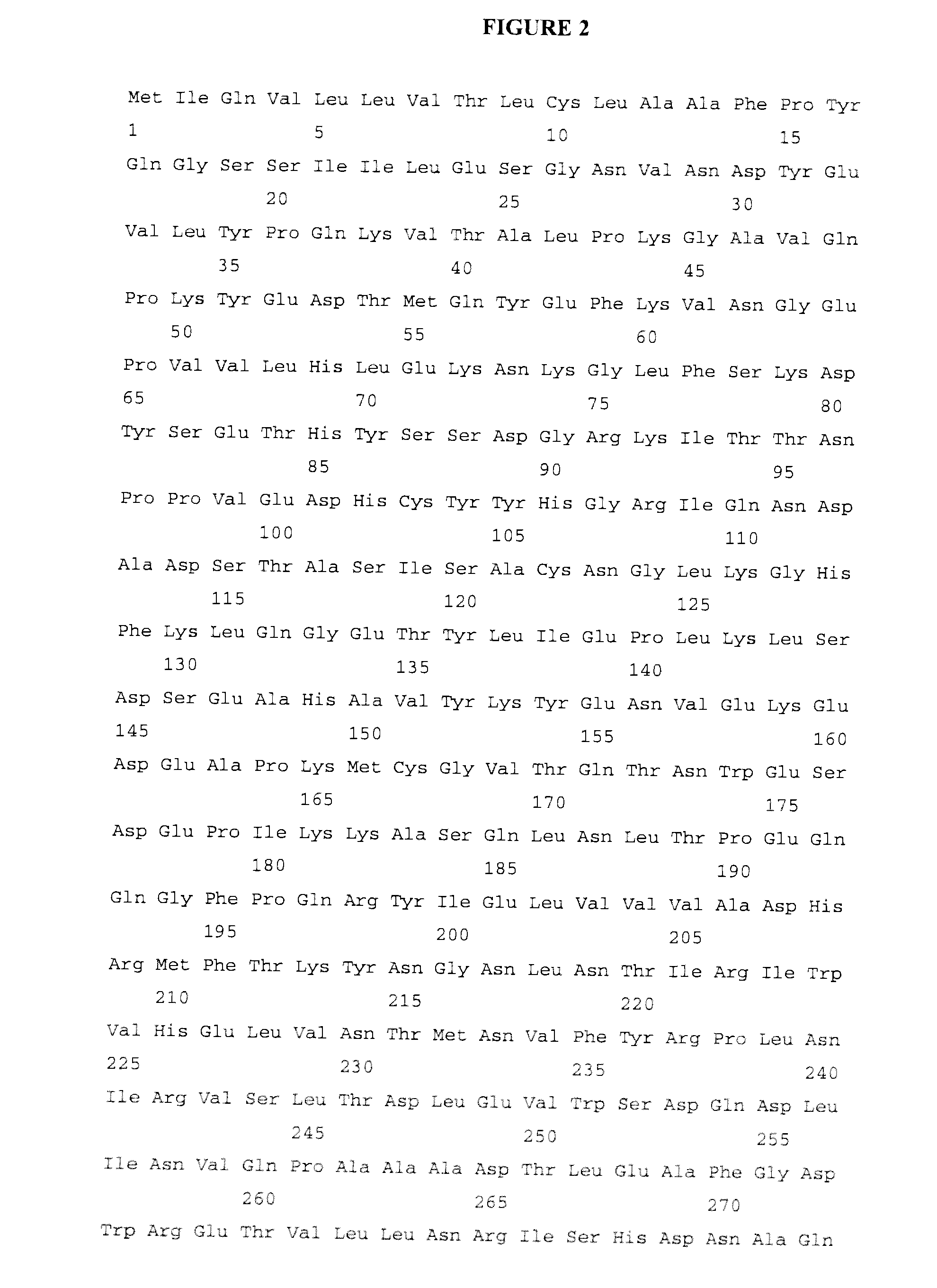Combination therapy for treatment of cancer
a cancer and combination therapy technology, applied in the field of cancer combination therapy, can solve problems such as disassembly/disassembly of microtubules
- Summary
- Abstract
- Description
- Claims
- Application Information
AI Technical Summary
Benefits of technology
Problems solved by technology
Method used
Image
Examples
example 1
Expression of Contortrostatin in Origami B strain of E. coli
[0167] The sequence HKGPAT, which represents the C-terminal amino acid sequence of the monomeric disintegrin, echistatin, was included at the C-terminal end of the CN disintegrin domain sequence. This construct is a chimera that combines by the means of genetic engineering the sequences of two snake venom disintegrins with different origins: echistatin (a viperid disintegrin) and contortrostatin (a crotalid disintegrin). For this reason, this disintegrin construct that carries a C-terminal graft is referred to as “vicrostatin” or “VN.” CN disintegrin domain without the HKGPAT sequence is referred to as “rCN” or “rCN construct.” The amino acid sequence of vicrostatin is shown below as SEQ ID NO: 8.
(SEQ ID NO: 8)DAPANPCCDAATCKLTTGSQCADGLCCDQCKFMKEGTVCRRARGDDLDDYCNGISAGCPRNPFHHKGPAT.
[0168] Contortrostatin wild-type disintegrin domain or the disintegrin domain with echistatin C-terminal graft was directionally cloned by PCR ...
example 2
Biological Activity of Recombinant Contortrostatin Constructs
[0179] A. In Vitro Functional Assays
[0180] The recombinant CN products were evaluated for biological activity by a platelet aggregation inhibition assay. According to this assay, CN binding to GPIIb / IIIa (integrin αIIbβ3) in an RGD dependent manner inhibits ADP induced platelet aggregation (Trikha, Rote, et al. 1994). In this assay, potential inhibitors are added to fresh platelet-rich plasma, and after minute, ADP is added to a final concentration of 1 μM to induce aggregation. If inhibitor is present, functional aggregation will not occur. The IC50 is defined as the concentration at which 50% of the activity is inhibited, and is used as a measure of the potency of an inhibitor.
[0181] It was shown that VN exhibited an IC50 of 59 nM in the platelet inhibition assay, which is almost identical to that observed for native CN. The rCN conformer however did not inhibit platelet aggregation, even at low μM concentrations whic...
example 3
Optimizing Codon Usage
[0196] A potential issue with Origami E. coli strain (FA113) is its lack of codon usage optimization. In many organisms, not all of the 61 tRNA species are used equally. The so-called major codons are those that occur in highly expressed genes, whereas the minor or rare codons tend to be in genes expressed at lower levels; which of the 61 codons are the rare ones depends strongly on the organism.
[0197] Eukaryotic proteins tend to translate inefficiently in E. coli because of mismatched codon use that hampers protein production in heterologous expression systems (Makrides, Microbiol. Rev. 60(3): 512-38 (1996)). The codon usage per organism can be found in codon usage databases well known in the art and available online.
[0198] The following overlapping oligonucleotide primers were generated and used to replace the CGG and ACA codons in the wild type CN gene.
[0199] CNCGGfor—CN disintegrin domain forward primer that replaces CGG and the eleventh ACA codons:
(S...
PUM
| Property | Measurement | Unit |
|---|---|---|
| molecular mass | aaaaa | aaaaa |
| pH | aaaaa | aaaaa |
| molecular weight | aaaaa | aaaaa |
Abstract
Description
Claims
Application Information
 Login to View More
Login to View More - R&D
- Intellectual Property
- Life Sciences
- Materials
- Tech Scout
- Unparalleled Data Quality
- Higher Quality Content
- 60% Fewer Hallucinations
Browse by: Latest US Patents, China's latest patents, Technical Efficacy Thesaurus, Application Domain, Technology Topic, Popular Technical Reports.
© 2025 PatSnap. All rights reserved.Legal|Privacy policy|Modern Slavery Act Transparency Statement|Sitemap|About US| Contact US: help@patsnap.com



